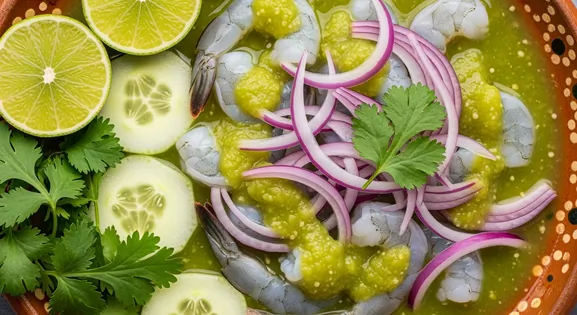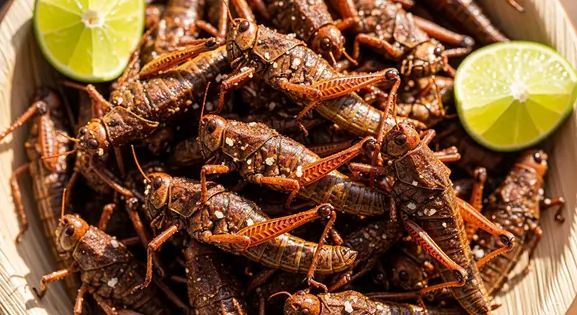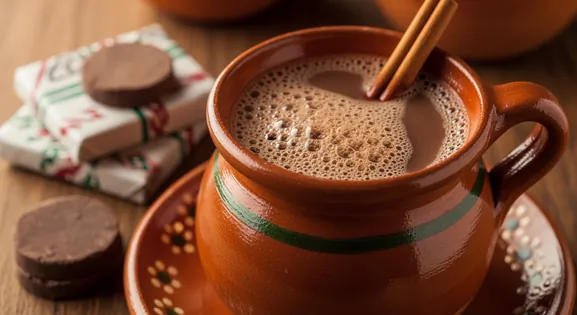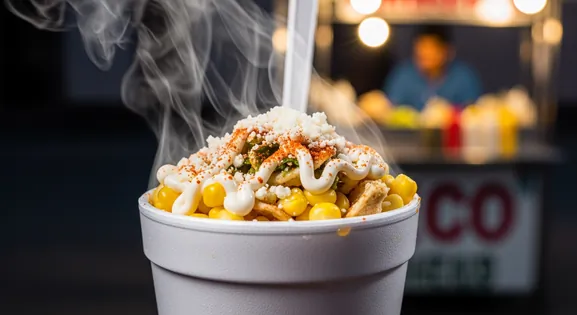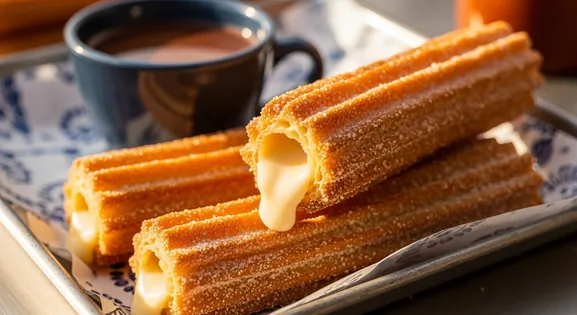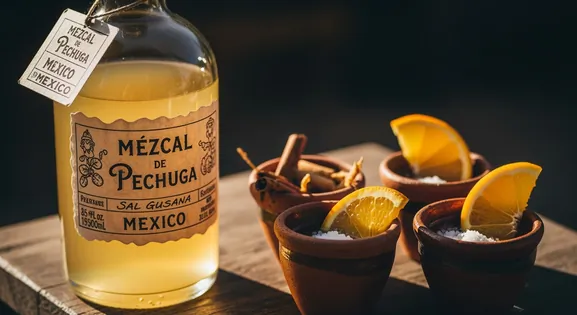Escamoles in Mexico: A Complete Food Lover's Guide
Escamoles
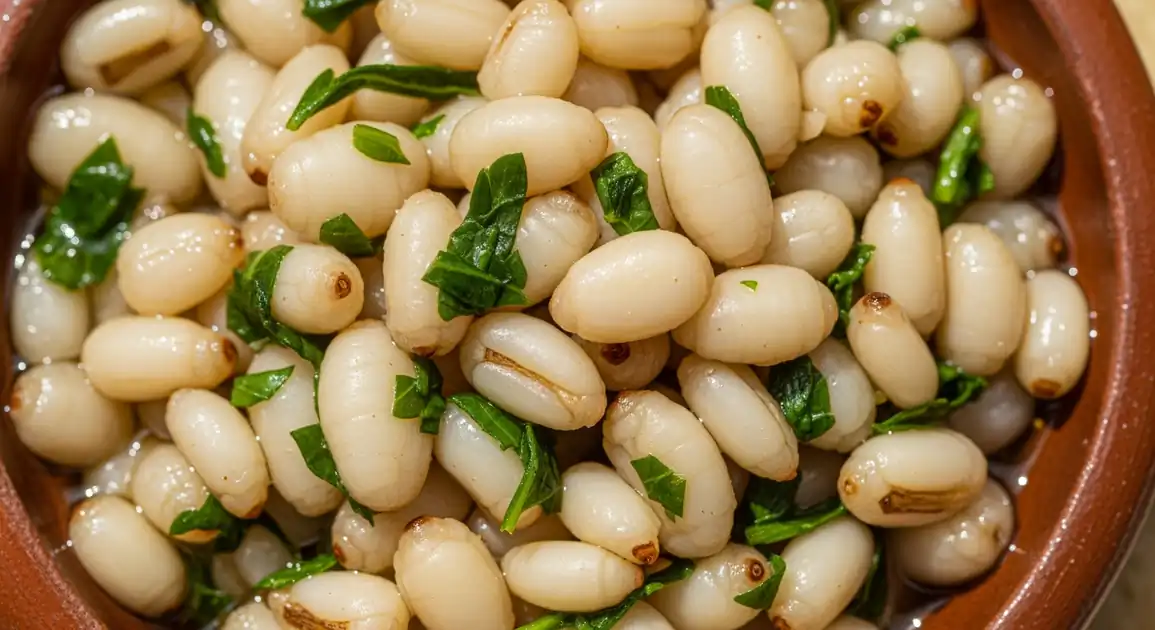
About Escamoles (Ant Larvae/Pupae)
Escamoles, often called 'Mexican caviar,' are the edible larvae and pupae of Liometopum ants found in Central Mexico. This pre-Hispanic delicacy is known for its unique granular texture, resembling cottage cheese or corn kernels, and a delicate, buttery, slightly nutty flavor. Harvested seasonally in spring, they are typically sautéed with epazote and served as a prized appetizer.
Deconstructing Escamoles (Ant Larvae/Pupae): Ingredients and Method
Freshness is key. Escamoles are delicate and perishable. Preparation is usually simple to highlight their unique flavor. Common method involves gently rinsing them (if needed) and sautéing in butter or oil with finely chopped white onion, garlic, and sprigs of epazote. They cook quickly, becoming opaque and slightly firm. Overcooking should be avoided. They are served immediately, often with warm corn tortillas.
Key Ingredients of Escamoles (Ant Larvae/Pupae)
Escamoles (Ant Larvae/Pupae)
The core ingredient, these are the edible larvae and pupae of Liometopum ants, prized for their delicate texture and subtle flavor. They are harvested from the roots of agave or nopal plants.
Quality indicator: Look for plump, creamy-white larvae that appear moist and intact, not shriveled or discolored.
Epazote
A pungent, aromatic herb native to Mesoamerica, epazote is crucial for authentic escamoles, imparting a distinctive, slightly medicinal, and earthy flavor that complements the richness of the larvae.
Quality indicator: Fresh epazote should have vibrant green leaves and a strong, characteristic aroma. Avoid wilted or yellowed leaves.
Butter or Oil
Used for sautéing, butter or a neutral oil helps to gently cook the escamoles, enhancing their natural buttery notes and ensuring they remain tender and not overcooked.
Quality indicator: High-quality, fresh butter or a clean, neutral cooking oil is essential to avoid masking the delicate flavor of the escamoles.
Perfect Partners: What to Pair
Warm Corn Tortillas
Side Dish
Soft, freshly made corn tortillas are the traditional accompaniment, allowing diners to create small tacos with the escamoles, providing a neutral base that highlights the delicacy's unique flavor and texture.
Mezcal or Tequila
Beverage
A crisp, high-quality mezcal or tequila can complement the earthy and slightly nutty notes of escamoles, offering a refreshing contrast and enhancing the overall culinary experience.
The Story Behind the Dish
Consumed since pre-Hispanic times, escamoles were a valuable source of protein for Aztec and other indigenous cultures in Mesoamerica. Their collection, often from the base of maguey or nopal plants, was and remains a labor-intensive process. Today, they are considered a gourmet ingredient, connecting modern Mexican cuisine with its ancient roots.
Local Escamoles (Ant Larvae/Pupae) Variations in Mexico
Escamoles al Mojo de Ajo
Sautéed with abundant garlic and butter or oil.
Escamoles con Mantequilla y Epazote
The most classic preparation: sautéed simply with butter and the herb epazote.
Tacos de Escamoles
Sautéed escamoles served inside warm corn tortillas, often with a simple salsa or guacamole.
Escamoles en Omelet
Cooked escamoles folded into an egg omelet.
Escamoles con Guacamole
Served alongside or mixed into fresh guacamole.
An Authenticity Checklist
What to Look For
-
Served in a reputable restaurant known for handling seasonal/pre-Hispanic ingredients
Ensures better sourcing, handling, and freshness knowledge for this perishable delicacy.
-
Creamy white, plump appearance (cooked)
Fresh, properly cooked escamoles should look moist and have a pale, appealing color. Avoid grey or discolored ones.
-
Dish is served hot and smells fresh/nutty
Temperature indicates recent preparation. Off-smells are a clear warning sign of spoilage.
-
Clear information about seasonality (ordering during Spring: Feb-May)
Authentic, fresh escamoles are primarily available during this window. Off-season offerings are likely frozen or preserved, affecting quality.
What to avoid
-
Suspiciously cheap escamoles
Harvesting is difficult, making them expensive. Very low prices might indicate poor quality, spoilage, or adulteration.
-
Escamoles served lukewarm or cold
Indicates they were not freshly prepared, increasing spoilage risk.
-
Dull, grey, brownish, or dried-out appearance
Strong indicators of poor quality or spoilage.
-
Vendors or restaurants with questionable hygiene standards
General cleanliness is crucial, especially for delicate ingredients.
-
Ordering if you have a known shellfish or insect allergy without caution
Potential for cross-reactivity exists. Consult with staff or start with a minimal portion.
Explore Escamoles (Ant Larvae/Pupae) in Detail: City Guides
Discover where to find the best Escamoles (Ant Larvae/Pupae) and learn local tips in these cities:
Dietary Information
Dietary Information
Important Note for Travelers: Your safety is our priority. Below are the common allergens associated with the traditional preparation of this dish. However, recipes and ingredients can vary significantly between establishments. Always confirm all ingredients directly with the food vendor before ordering, especially if you have a severe allergy.
Dietary Suitability
How to Order Escamoles (Ant Larvae/Pupae)
Frequently Asked Questions about Escamoles (Ant Larvae/Pupae)
What are Escamoles?
Escamoles are the edible larvae and pupae of Liometopum ants, a species native to the high plains of Central Mexico. Harvested from the roots of agave or maguey plants, they are considered a delicacy in Mexican cuisine, often referred to as 'Mexican caviar' due to their appearance and high value.
What do Escamoles taste like?
Escamoles have a unique taste and texture, often described as slightly nutty, buttery, and creamy, with a consistency similar to cottage cheese or firm tofu when cooked. The flavor is delicate and savory, absorbing seasonings well, commonly prepared with butter, garlic, onion, and epazote.
Are Escamoles a smart choice?
When sourced fresh from reputable vendors/restaurants and prepared properly, escamoles can be a discerning choice. The main considerations are freshness (they spoil quickly) and potential allergic reactions, particularly for individuals with shellfish or other insect allergies. Always choose established eateries known for handling this delicacy.
When are Escamoles available?
Escamoles are highly seasonal. The harvesting season is typically during the spring, roughly from late February/early March to May/early June, coinciding with the ants' reproductive cycle. Outside this period, finding fresh escamoles is difficult and quality may be compromised if frozen improperly.
Are Escamoles gluten-free?
Yes, pure escamoles (ant larvae/pupae) are naturally gluten-free. Common preparations involving sautéing with butter, garlic, and epazote are also typically gluten-free. However, verify if they are served with wheat tortillas or if any flour is used in the specific restaurant preparation.
Can you be allergic to Escamoles?
Yes, it's possible to be allergic to escamoles, as with other insect proteins. Individuals with shellfish allergies might have a higher risk of cross-reactivity. If you have known insect or shellfish allergies, it's best to exercise caution or avoid them. Start with a small portion if trying for the first time.
How are Escamoles typically prepared?
The most common preparation is sautéing them simply with butter or oil, garlic, onion, and the herb epazote, which imparts a distinctive flavor. They are often served as an appetizer ('botana'), spooned into warm corn tortillas to make tacos, or sometimes added to omelets or served alongside guacamole.
Expert How-To Guides about Escamoles (Ant Larvae/Pupae)
Choosing Where to Eat Escamoles
Select a reputable source for this seasonal delicacy to ensure optimal freshness and quality.
- Opt for established mid-range to high-end restaurants known for traditional or pre-Hispanic cuisine.
- Ask the waiter or chef about the freshness and source of the escamoles. Reputable places are usually transparent.
- Check recent reviews (if possible) specifically mentioning escamoles during the current season.
- Avoid street food stalls or informal vendors offering escamoles unless you are very confident in their source and handling.
- Be wary of unusually low prices, as escamoles are expensive due to difficult harvesting.
Questions to Ask Before Ordering Escamoles
Asking key questions can help ensure you receive fresh, high-quality, and well-prepared escamoles, enhancing your culinary experience.
- Confirm they are fresh and in season ('¿Son frescos de esta temporada?').
- Ask how they are prepared ('¿Cómo los preparan aquí?'). Classic sautéed with epazote is common.
- Inquire about the portion size ('¿Qué tamaño tiene la porción?').
- If you have allergies, ask if they are prepared separately from potential cross-contaminants ('¿Se preparan aparte de...?').
- Ask for serving suggestions (e.g., best way to eat them, recommended pairings).
Visual Checks for Fresh Escamoles (Cooked)
Learning to visually assess cooked escamoles is crucial for identifying freshness and ensuring a high-quality culinary experience.
- Look for a creamy white or pale ivory color.
- They should appear plump and moist, not dried out or shriveled.
- Avoid escamoles that look grey, brownish, or dull, which can indicate spoilage or poor quality.
- The dish should smell fresh and buttery/nutty, possibly with notes of epazote; avoid any sour or off-putting odors.
Our Commitment to Quality
At Tasteplorers, our mission is to provide the most accurate and useful travel information in the world. To achieve this, all content on this site is created through our unique editorial framework. We utilize leading AI research tools, guided by our proprietary prompts, and a multi-stage validation process. This entire system is overseen by our editorial team to ensure everything we publish meets our high standards for accuracy, cultural nuance, and practical value for travelers.
Learn more about our Editorial Process and our Mission.
Explore regions
Europe
Discover Europe's diverse culinary landscape, from Mediterranean flavors to hearty Alpine fare. Learn to navigate markets, decode menus, and eat like a local.
Latin America & Caribbean
Discover the vibrant cuisines of Latin America & the Caribbean. Our expert guide covers everything from Mexican street food to Peruvian ceviche and market tips.
Oceania
Explore Oceania's diverse food scene. Learn about Polynesian earth ovens, Fijian feasts, and the vibrant café culture of Australia and New Zealand.
Southeast Asia
Explore Southeast Asia's diverse food cultures from Thailand to Vietnam. Get expert tips on navigating spice levels, choosing quality vendors, and understanding the rich traditions of the region.
